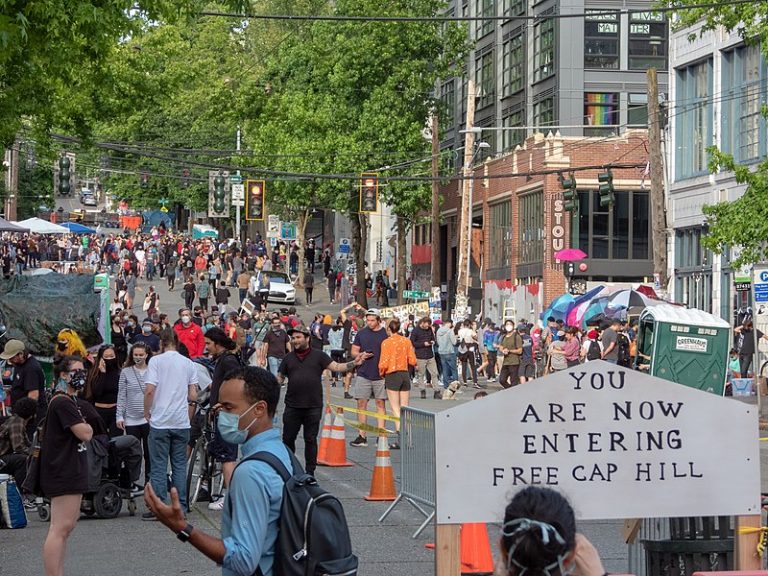Published on July 2, 2020

Seattle’s police-free “autonomous zone” is coming to an end.
After two largely peaceful weeks, shootings over the last several days near the Capitol Hill Organized Protest area, CHOP for short, left a 19-year-old man dead and three others wounded. Mayor Jenny Durkan announced on June 22 that the city would retake the abandoned police precinct at the heart of the zone and wind down the occupation.
In its brief life, CHOP has reinforced Seattle’s reputation as a quirky left-coast bastion of strong coffee and strong progressive politics. Many white Seattleites like to think of their city that way too. But Seattle’s progressive appearance is deceiving.
It is a city and region with a long history of racism, of violent marginalization, and of pushing back against more radical movements for social change. It is, in short, much like the rest of America.
The global protests of the last few weeks have rightly generated the feeling that the world is at a turning point on redressing racial inequities. This moment has great possibilities, but the history of Seattle and other seemingly progressive places should make us realize that change is not that simple.
The story here goes beyond political leadership. It involves deep, systemic racial inequalities baked into the fabric of this overwhelmingly white city.
“For most of its history,” James Gregory, a UW historian, observes, “Seattle was a segregated city, as committed to white supremacy as any location in America.”
Discriminatory mortgage lending and racially restrictive covenants limited Seattle’s nonwhite population to a single neighborhood, the Central District. Fair housing laws opened up new parts of the city and suburbs to minority homeowners and renters after the 1960s, but Seattle’s overwhelmingly single-family zoning limited the housing available to new buyers.
Continue reading at the New York Times.
Originally written by Margaret O'Mara, UW history professor, for the New York Times.